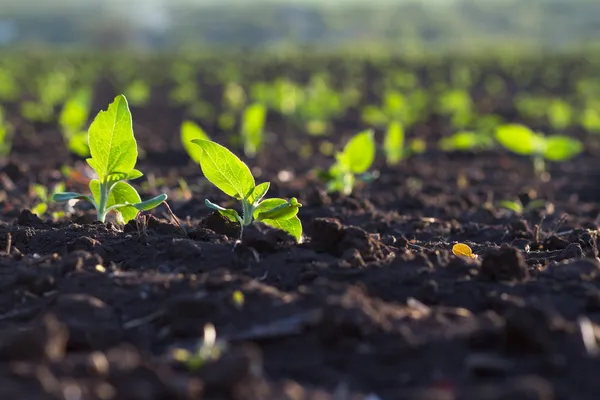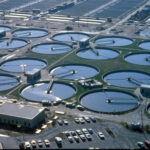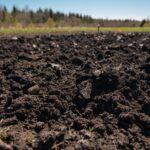Potassium humate powder is an organic, water-soluble compound derived from humic substances, primarily leonardite or lignite, through a reaction with potassium hydroxide. It serves as a highly effective soil conditioner, fertilizer enhancer, and plant growth stimulant in agriculture.
Composition and Properties
Potassium humate is the potassium salt of humic acid. It appears as a black powder, flake, or granule and is characterized by:
- High Solubility: Fully soluble in water above pH 7.0, though precipitation may occur in acidic solutions (pH 5.5 or lower).
- Humic Acid Content: Typically 60–95% (dry basis), depending on the extraction method.
- Fulvic Acid Content: Ranges from 1–15%, contributing to its bioactivity.
- Potassium (K₂O): Contains 10–15%, providing an essential nutrient for plant metabolism.
- pH Range: Alkaline, typically 8.5–11.0, aiding in soil pH stabilization.
- Organic Matter: 80–85%, enhancing soil fertility and microbial activity.
- Low Heavy Metal Content: Ensures environmental safety and suitability for organic farming.
Its high cation exchange capacity (CEC) allows it to bind and release nutrients effectively, improving nutrient availability for plants.
Production Process
Potassium humate powder is produced by extracting humic acid from leonardite, lignite, or peat using an alkali (typically potassium hydroxide) through a wet chemistry process. The extracted humic acid is then spray-dried at low temperatures to preserve its functional properties, resulting in a fine, water-soluble powder. This process ensures higher functionality compared to raw leonardite, as it “unrolls” tightly bound molecules, exposing active functional groups for better nutrient chelation and soil interaction.
Benefits in Agriculture
Potassium humate powder offers numerous benefits for soil health, plant growth, and sustainable farming:
- Soil Structure Improvement: Enhances soil aggregation, reducing compaction, improving aeration, and increasing water retention. This is particularly effective in sandy or clayey soils.
- Nutrient Uptake Enhancement: Acts as a chelating agent, making micronutrients (e.g., iron, zinc, manganese) and macronutrients (nitrogen, phosphorus, potassium) more bioavailable to plants, reducing fertilizer waste.
- Root Development: Stimulates root growth and cell division, enabling plants to access more water and nutrients, thus improving drought resistance.
- Microbial Activity: Promotes beneficial soil microbes, enhancing nutrient cycling and disease suppression.
- Stress Resistance: Increases plant resilience to abiotic stresses such as drought, salinity, and temperature extremes by enhancing photosynthesis and organic matter content in plant cells.
- Crop Yield and Quality: Boosts yields and improves fruit size, color, sweetness, and shelf life in various crops (e.g., cereals, vegetables, fruits, pulses).
- Sustainability: Reduces nutrient leaching, minimizes fertilizer use (by up to 30%), and supports organic farming by maintaining soil health without harmful contaminants.
Application Methods
Potassium humate powder is versatile and can be applied in several ways, depending on crop type, soil conditions, and farming goals:
- Soil Application: Mix with basal fertilizers or apply directly during land preparation. Recommended dosage: 2–12 kg/ha (98% powder/flakes).
- Foliar Spray: Dissolve in water (1–2 kg/ha for 98% powder, diluted at 1:600–800) and spray 2–3 times during seedling, vegetative, and fruiting stages for rapid nutrient absorption.
- Drip Irrigation/Fertigation: Inject into irrigation systems (0.5–2 ml/L for 20–40% liquid formulations) for continuous nutrient delivery.
- Seed Coating: Enhances germination rates when used as a coating.
- Hydroponics: Effective at concentrations as low as 750 ppm, promoting root growth in soilless systems.
Application timing is critical for optimal results, typically during land preparation, early vegetative growth, before flowering, or after stress events (e.g., drought, pest attacks).
Usage Instructions
- Mixing: Dissolve 1 lb (0.45 kg) in 1 gallon (4 liters) of water, agitate to dissolve, then dilute further with 19 gallons (72 liters) of water for soil application. Avoid mixing with carbonate-based pesticides or solutions with pH below 6.5 to prevent reduced efficacy.
- Soil Testing: Conduct soil tests to determine nutrient levels and adjust application rates based on soil conditions, crop type, and nutrient requirements.
- Storage: Available in various packaging (e.g., 25 kg bags, 1 MT super sacks) and should be stored in sealed containers to maintain quality.
Specific Crop Benefits
- Cereals (e.g., wheat, maize): Improves tillering and grain filling.
- Vegetables (e.g., tomato, potato): Enhances uniform growth, reduces nutrient deficiencies, and minimizes blossom end rot.
- Fruits (e.g., banana, citrus): Increases fruit size, color, sweetness, and shelf life.
- Pulses and Oilseeds: Enhances nodulation and nitrogen fixation, improving pod setting and seed quality.
- Cash Crops (e.g., sugarcane, cotton): Boosts chlorophyll production, biomass, and sucrose/fiber quality.
Environmental and Economic Considerations
Potassium humate is certified for organic use, aligning with sustainable farming practices by reducing reliance on chemical fertilizers and minimizing environmental impact through lower nutrient runoff. While it may be more expensive than conventional fertilizers, its long-term benefits—such as reduced fertilizer needs, improved soil health, and higher crop yields—offset initial costs. Prices vary based on purity, humic acid content, and market factors, but specific pricing details are available through suppliers or other agricultural platforms.
Conclusion
Potassium humate powder is a scientifically supported, eco-friendly solution for modern agriculture. Its ability to improve soil structure, enhance nutrient uptake, promote plant growth, and increase crop resilience makes it an invaluable tool for farmers and gardeners aiming for sustainable productivity. For tailored application rates or formulations, consult a local agronomist or refer to supplier guidelines.









